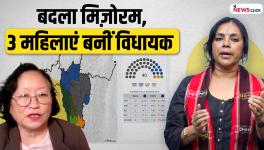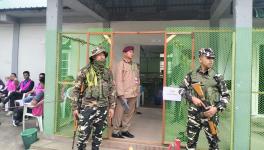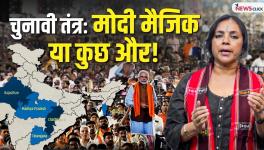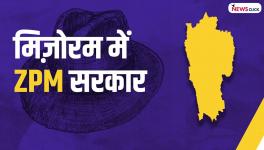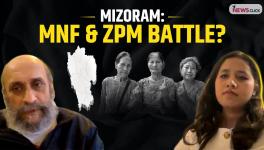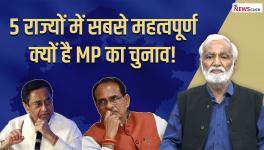How Has Mizoram Voted Since Statehood?
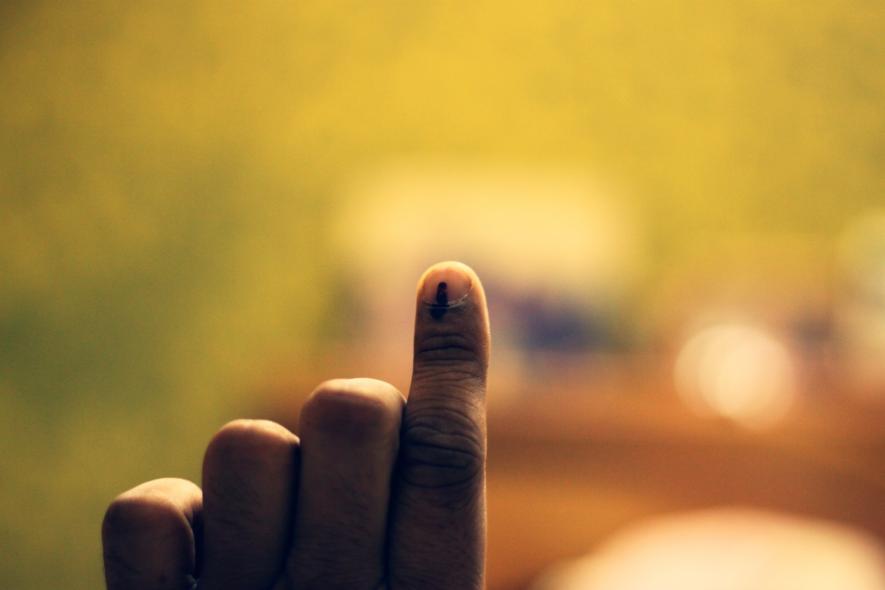
Image Credit: Incredibly Numing/Flickr
Campaigning for the Mizoram Assembly Elections concluded at 4 PM on November 26. This election is one of the first times Mizoram has had so many parties in the fray. Traditionally, since statehood, Mizoram has oscillated between a Congress and a Mizo National Front (MNF) government. The Congress is the only party to have increased its vote and seat share as an incumbent party, which it achieved in 2013. However, no party has ever served three terms consecutively. Considering an anti-incumbency factor and the deft handling of Mizo nationalism during the CEO fracas, the Congress may manage a third consecutive win. However, Mizoram Chief Minister, Lal Thanhawla’s statement that the Congress was open to an alliance with like-minded parties in the state may hint at uncertainty regarding the poll results.
At present, the Congress and the MNF have fielded 40 candidates each. The BJP is contesting 39 seats and the Zoram People’s Movement 35. The People’s Representation for Identity and Status in Mizoram (PRISM) has fielded 13 candidates, the National People’s Party (NPP) 9, the Nationalist Congress Party (NCP) 5 and Zoramthar 24.
Also Read | Mizoram Elections: Landscape Changed After CEO Spat
1987 Election
The first election since the Mizo Accord between the Government of India and the MNF was held in 1987. The Congress and the People’s Conference (PPC) were the two contesting parties, while the MNF candidates contested as independents. The Congress fielded 40 candidates for the 40-member Assembly and the PPC fielded 36. In this election, there were 69 independent candidates. The independent candidates received the highest vote share at 43.31 per cent, the Congress came second with 32.99 per cent and the PPC received 23.70 per cent of the votes. The independent candidates won 24 seats, the Congress won 13 and the PPC got 3.
1989 Election
Two years later, Mizoram went to the polls again in 1989. This time the MNF was also a contesting party alongside the Congress and the PPC. The Congress fielded 34 candidates of which 23 won, giving it a simple majority. The MNF fielded 40 candidates, out of which 14 were successful, and the PPC won 1 seat out of the 38 it contested. Out of 50 contesting independent candidates, only 2 won. The vote-shares also echoed this trend wherein the Congress got 34.85 per cent, the MNF 35.29 received per cent and the PPC had 19.67 per cent. Independent candidates received 10.19 per cent of the votes polled.
Also Read | Mizoram CEO Likely to Go, Brus to Vote in Mizoram Exclusively
1993 Election
In 1993, the electoral landscape had changed. The Bharatiya Janata Party (BJP) entered Mizoram, and the PPC did not file any nomination papers. The fight this time was between the BJP, Congress and MNF, along with independent candidates. The BJP fielded 8 candidates, none of whom won and 7 forfeited their deposits. The Congress fielded 28 candidates out of which 16 won and the MNF 38 candidates, of which 14 won. Out of 47 contesting independent candidates, 10 won. The MNF received the highest vote-share of 40.41 per cent. The Congress came second with 33.10 per cent followed by the independent candidates and the BJP with 23.38 per cent and 3.11 per cent respectively.
1998 Election
The 1998 elections saw ten parties in the fray. The contesting parties this time were; the BJP, Congress, MNF, Janata Dal (JD), Samata Party (SAP), Lok Shakti (LS), Rashtriya Janata Dal (RJD), Maraland Democratic Front (MDF), MNF(Nationalist) [MNF(N)] and the Mizoram People’s Conference (MPC). This time, the BJP fielded 12 candidates, none of whom won. The JD and the SAP fielded 10 candidates each; the LS, 15; the RJD, 8; the MNF(N) 24; and the MDF, 2. None of these parties’ candidates had any success. The Congress fielded 40 candidates and won in only 6 constituencies. Whereas the MNF fielded 28, out of which 21 won, giving the party a simple majority. The MPC came second winning 12 out of the 28 seats they contested.
In terms of vote shares, the Congress surprisingly received the largest at 29.77 per cent of votes polled. The MNF came second with 24.99 per cent of the votes, and the MPC received 20.44 per cent. The MNF(N) received a larger vote-share than the BJP at 9.23 per cent while the BJP received 2.50 per cent. The MDF received 2.28 per cent of the votes. The remaining parties all received less than 1 per cent of the votes polled. Despite 44 contesting independent candidates and only 1 winning candidate, they received 9.82 per cent of the votes.
Also Read | Bru Issue Behind the CEO Controversy in Mizoram?
2003 Election
In 2003, once again there were 10 contesting political parties. The BJP, Congress, MNF, MPC and the MDF contested the polls once again. They were joined by the Communist Party of India (CPI), Zoram Nationalist Party (ZNP), Janata Dal (United) (JD(U)), Ephraim Union (EU) and the Hmar Peoples Convention (HPC).
The BJP, CPI and Congress fielded 8, 4 and 40 candidates respectively, however, neither the BJP nor CPI had any luck. The Congress won in 12 of the constituencies. The MNF, MPC and the ZNP fielded 39, 28 and 27 candidates, respectively. The MPC and ZNP won only 3 and 2 seats respectively, and the MNF gained a simple majority by winning 21 seats. The JD(U) possibly had the worst luck wherein they fielded 28 candidates and all of them forfeited their deposits. The EU, HPC and MDF contested 3, 1 and 2 seats, respectively. The HPC and MDF won 1 seat each. Out of 12 independent candidates, none were successful.
This time the winning party received the largest vote-share. The MNF received 31.69 per cent, followed by the Congress with 30.06 per cent. The MPC got 16.16 per cent and the ZNP, 14.70 per cent. The MDF received 1.95 per cent and the BJP got 1.87 per cent. The rest of the contesting parties and independent candidates received less than 1 per cent of the polled votes.
Also Read | Mizoram Assembly Elections 2018: A Political Backgrounder
2008 Election
In 2008, the ten parties in the fray were- the BJP, Congress, Nationalist Congress Party (NCP), MNF, MPC, ZNP, JD(U), Lok Bharati (LB), Lok Jan Shakti Party (LJP) and the MDF. This time, the Congress made a clean sweep of the polls, winning 32 out of the 40 seats they contested. They were followed by the MNF who won 3 out of 39 contested seats. The MPC and the ZNP contested 16 and 17 seats respectively and won 2 seats each. The MDF contested 1 and was successful. Of the parties that did not win any constituency, the BJP contested 9 seats, NCP 6, JD(U) 2, LB 5 and the LJP 38.
The Congress also gained the largest vote-share at 38.89 per cent. Followed by the MNF, MPC and ZNP who had 30.65, 10.38 and 10.22 per cent, respectively. Despite 33 independent candidates contesting the polls unsuccessfully, they earned 7.69 per cent of the votes cast. The remaining candidates failed to receive more than 1 per cent of the votes.
Also Read | Farming and MLA Salaries Responsible for Asset Increases?
2013 Election
Mizoram’s 2013 election was the first time the none of the above (NOTA) option was included. However, only 8 parties contested the polls; the BJP, Congress, NCP, MNF, MCP, ZNP, MDF and Jai Maha Bharath Party. Surprisingly, this time the Congress was able to increase its tally from 32 in 2008 to 34 in 2013. They had fielded 40 candidates. The MNF fielded 31 candidates of whom 5 were successful. The MPC contested 8 and won in 1 constituency.
The Congress received 44.63 per cent of the votes, an increase from 2008. The MNF’s vote-share was further reduced to 28.65 per cent. The ZNP despite being completely unsuccessful received 17.42 per cent and the MPC got 6.15 per cent. None of the other parties, independent candidates, or NOTA received more than 1 per cent.
As is evident, the Congress’ fortunes in 2013 did not follow the pattern that had emerged since 1987. However, one can only guess the outcome until the results are announced on December 11.
Get the latest reports & analysis with people's perspective on Protests, movements & deep analytical videos, discussions of the current affairs in your Telegram app. Subscribe to NewsClick's Telegram channel & get Real-Time updates on stories, as they get published on our website.












